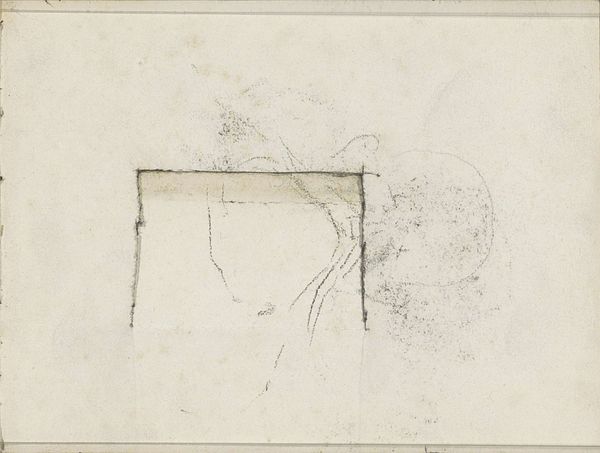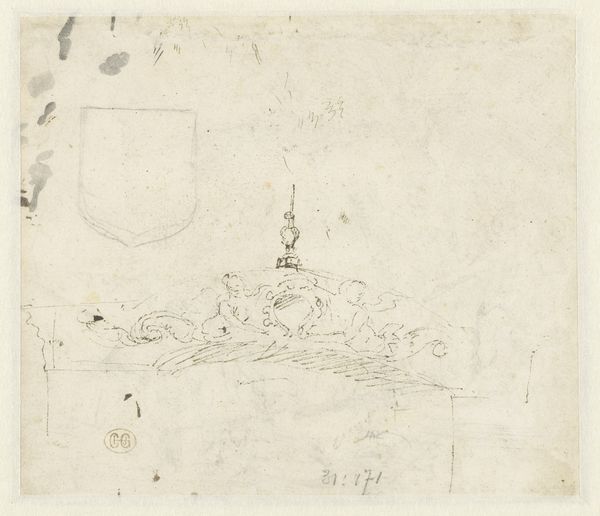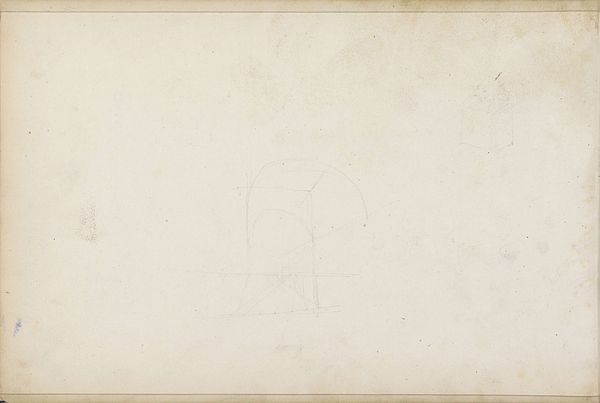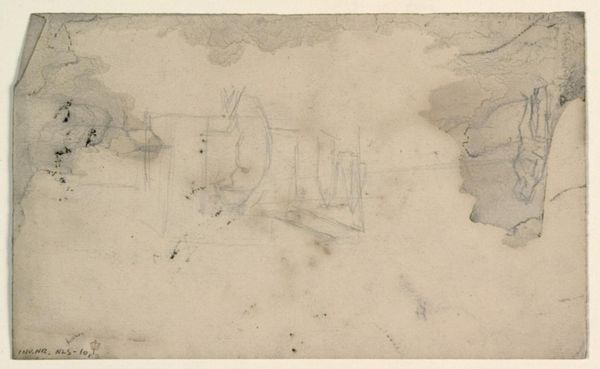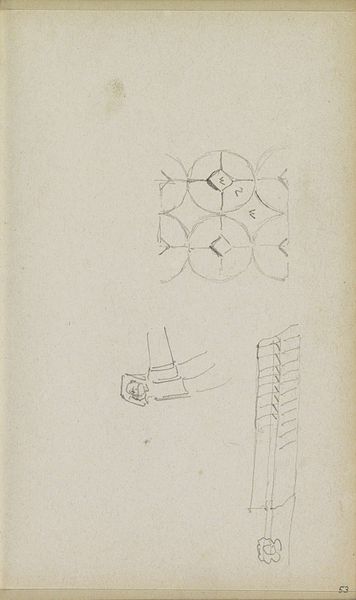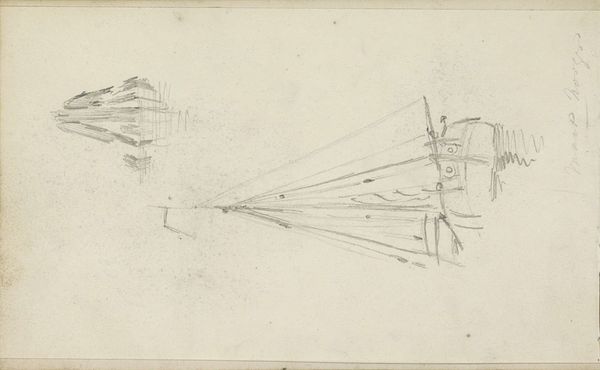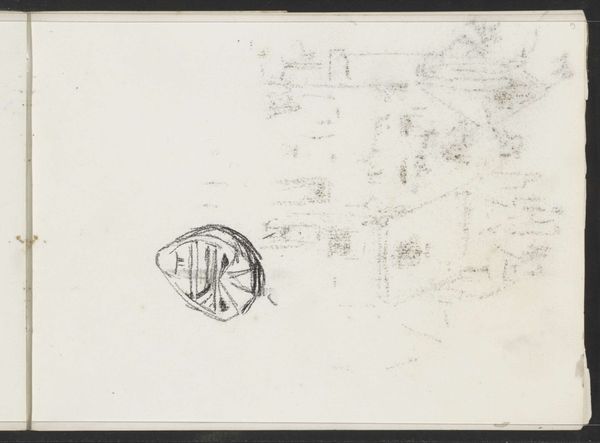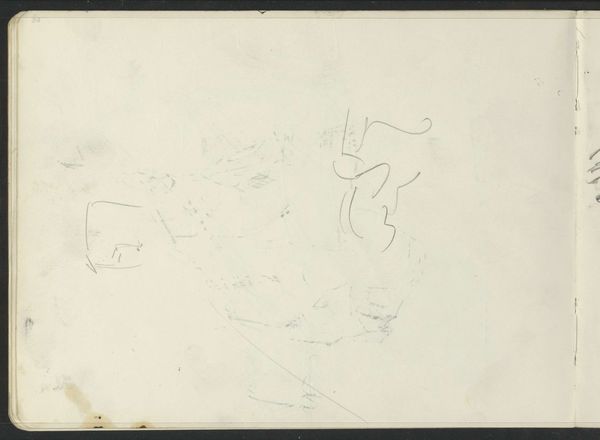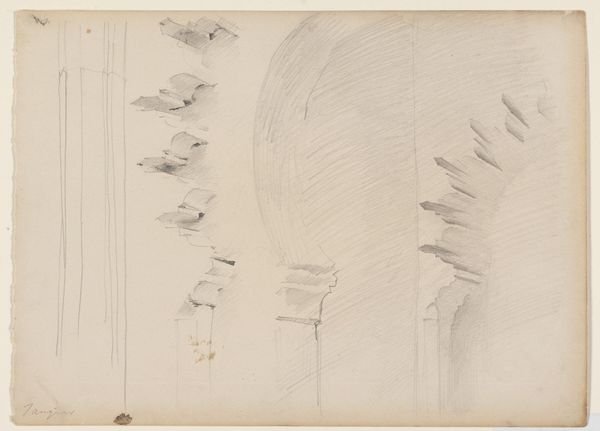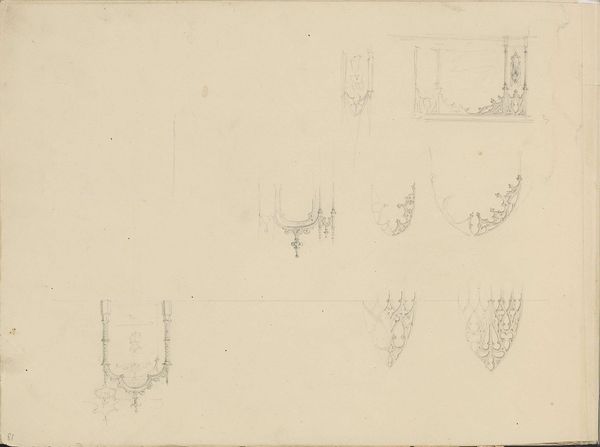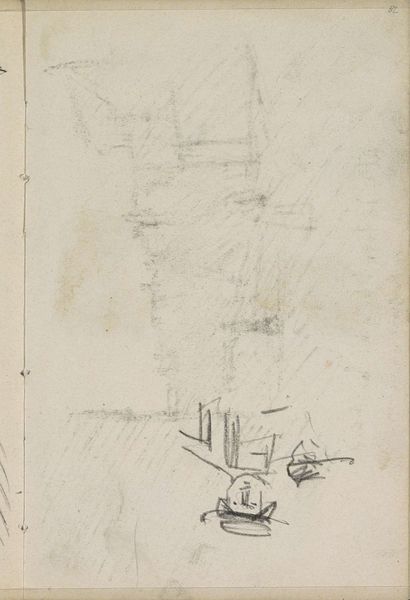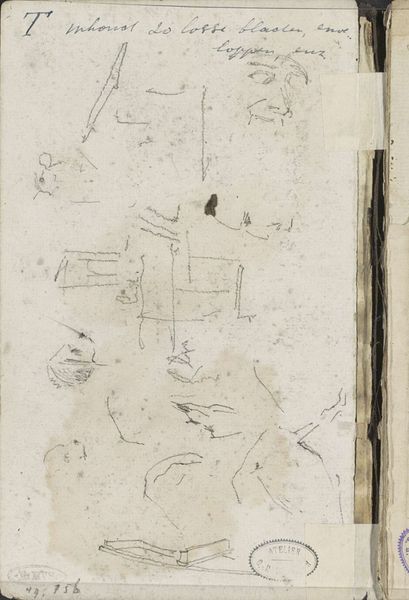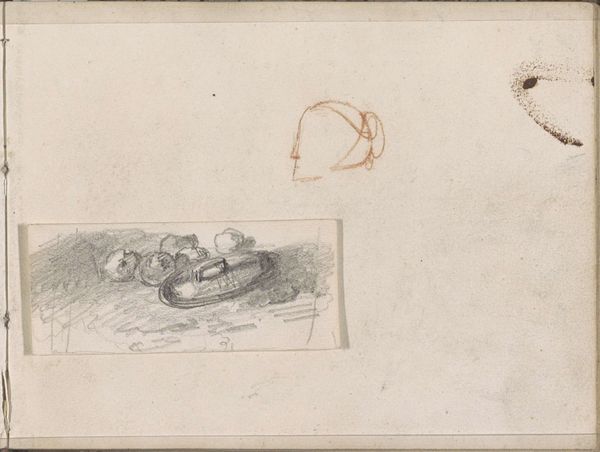
drawing, paper, pencil
#
drawing
#
pencil sketch
#
landscape
#
paper
#
geometric
#
pencil
#
line
Copyright: Rijks Museum: Open Domain
Curator: This drawing is attributed to Isaac Gosschalk and is entitled "Kerk met koepel, van bovenaf gezien," which translates to "Church with dome, seen from above." Created sometime between 1862 and 1867, it's a pencil sketch on paper. What are your initial thoughts? Editor: It feels tentative, almost ghostly. The faintness of the pencil and the unfinished quality give it a dreamlike presence, like peering into a half-formed memory. Curator: I agree that the linework possesses a delicate quality, emphasizing a concentration on pure form. Observe how the geometric shapes, especially the octagonal dome structures, demonstrate a precise understanding of spatial relations. The artist uses line weight economically to differentiate planes. Editor: But is this just about geometry? To me, religious architecture in the 19th century signifies more than form. It speaks to power structures, the influence of the church on social life, and perhaps even anxieties about secularization during a period of significant social change. A top-down view might even suggest a commentary on the church's all-seeing, all-controlling gaze. Curator: That's certainly one reading. But consider the pure composition. The contrasting density of the marks in the lower corner grounds the lighter architectural studies above. The blank space is just as crucial; it isolates the forms, allowing us to appreciate their inherent qualities without the distraction of context. Editor: Even so, Gosschalk was operating in a specific historical moment. Can we truly divorce this artistic act from the surrounding socio-political sphere? The incompleteness of the sketch, the hesitant lines – could this be interpreted as a visual metaphor for the instability or questioning of religious authority during that era? The negative space then becomes a site of potential contestation rather than a neutral backdrop. Curator: An interesting idea. However, I would push back, asserting that the formal elements dictate our primary reading experience. Editor: Ultimately, this is precisely why art endures – because its meanings can be renegotiated across generations and through evolving lenses. Curator: Indeed. Gosschalk’s sketch invites ongoing analysis and provides fertile ground for diverse interpretations.
Comments
No comments
Be the first to comment and join the conversation on the ultimate creative platform.
